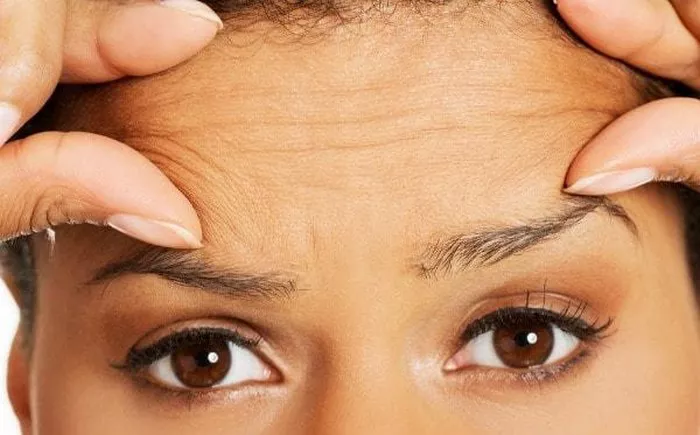Crow’s feet, also known as laugh lines or character lines, are the fine lines that appear around the eyes when we smile or squint. While these lines are a natural part of aging, they can make us look older and more tired than we feel. Fortunately, there are several ways to reduce crow’s feet when smiling and maintain a youthful appearance. In this article, we will explore the causes of crow’s feet, the best preventive measures, and effective treatments to reduce crow’s feet when smiling.
Causes of Crow’s Feet
Crow’s feet are caused by a combination of factors, including genetics, lifestyle, and environmental factors. As we age, the skin around our eyes becomes thinner and less elastic, making it more prone to wrinkles and fine lines. Repeated facial expressions, such as squinting or smiling, can also contribute to the development of crow’s feet. Other factors that can accelerate the formation of crow’s feet include sun exposure, smoking, and poor nutrition.
Preventive Measures
The best way to reduce crow’s feet when smiling is to prevent them from forming in the first place. Here are some preventive measures that can help:
Wear Sunglasses: Protect your eyes from the sun’s harmful UV rays by wearing sunglasses with UV protection. This can help prevent squinting, which can cause crow’s feet.
Use Sunscreen: Apply sunscreen with at least SPF 30 to your face and neck every day, even on cloudy days. This can help prevent sun damage, which can accelerate the formation of crow’s feet.
Quit Smoking: Smoking can damage collagen and elastin, two proteins that keep your skin firm and elastic. Quitting smoking can help prevent the formation of crow’s feet and other wrinkles.
Stay Hydrated: Drink plenty of water to keep your skin hydrated and plump. Dehydrated skin is more prone to wrinkles and fine lines.
Eat a Healthy Diet: A diet rich in antioxidants, vitamins, and minerals can help protect your skin from damage and keep it looking youthful.
Treatments to Reduce Crow’s Feet
If you already have crow’s feet, there are several treatments that can help reduce their appearance. Here are some of the most effective treatments:
Botox: Botox is a popular cosmetic treatment that can temporarily reduce the appearance of crow’s feet by relaxing the muscles that cause them. Botox injections are safe and effective, and the results can last for several months.
Dermal Fillers: Dermal fillers, such as hyaluronic acid, can help plump up the skin around the eyes and reduce the appearance of crow’s feet. The results of dermal fillers can last for up to a year.
Chemical Peels: Chemical peels can help improve the texture and tone of the skin around the eyes, reducing the appearance of crow’s feet. Chemical peels can be customized to your specific skin type and needs.
Laser Resurfacing: Laser resurfacing can help stimulate collagen production and improve the texture and tone of the skin around the eyes. Laser resurfacing can be customized to your specific skin type and needs.
Microdermabrasion: Microdermabrasion can help exfoliate the skin and improve its texture and tone, reducing the appearance of crow’s feet. Microdermabrasion is a non-invasive treatment that requires no downtime.
Conclusion
Crow’s feet are a natural part of aging, but they don’t have to make you look older than you feel. By taking preventive measures and exploring effective treatments, you can reduce the appearance of crow’s feet when smiling and maintain a youthful appearance. Whether you choose Botox, dermal fillers, chemical peels, laser resurfacing, or microdermabrasion, there is a treatment that can help you achieve your desired results. Consult with a qualified cosmetic physician to determine the best treatment plan for your needs.
FAQs
1. How do I get rid of crow’s feet when I smile?
There are several approaches to reducing the appearance of crow’s feet, both with and without medical intervention. Non-invasive options include using sunscreen daily, applying moisturizers or eye creams containing retinol or hyaluronic acid, and practicing facial exercises to strengthen the muscles around the eyes. For more significant or persistent crow’s feet, cosmetic treatments such as Botox injections, dermal fillers, laser therapy, or chemical peels may be recommended by a dermatologist or plastic surgeon.
2. How to smile without making crows feet?
Smiling without creating pronounced crow’s feet wrinkles can be achieved by practicing a softer smile, where the eyes remain relaxed and the focus is on gently curving the lips upward. Avoiding squinting or excessive facial expressions can also help minimize the appearance of crow’s feet. Additionally, maintaining well-hydrated skin and using sunglasses to shield the eyes from harsh sunlight can prevent premature wrinkling.
3. How do you make crow’s feet less noticeable?
To make crow’s feet less noticeable, consider incorporating skincare products containing ingredients like retinol, vitamin C, and peptides into your daily routine to promote collagen production and skin elasticity. Makeup techniques such as using a primer, concealer, or light-reflecting products can help camouflage fine lines temporarily. Additionally, practicing good skincare habits, staying hydrated, and protecting the delicate eye area from sun damage can contribute to smoother, more youthful-looking skin over time.
4. How to stop eyes creasing when smiling?
Preventing eyes from creasing when smiling involves maintaining healthy skin and employing techniques to minimize facial muscle strain. Avoid excessive sun exposure and wear sunglasses to shield the eyes from harmful UV rays. Use moisturizers or eye creams to keep the skin hydrated and supple. When smiling, try to relax the muscles around the eyes and avoid squinting by practicing a softer, more gentle smile. Regular facial exercises targeting the eye area can also help strengthen muscles and reduce the appearance of creases over time. If persistent creasing is a concern, consult with a dermatologist or cosmetic specialist for personalized treatment options.

